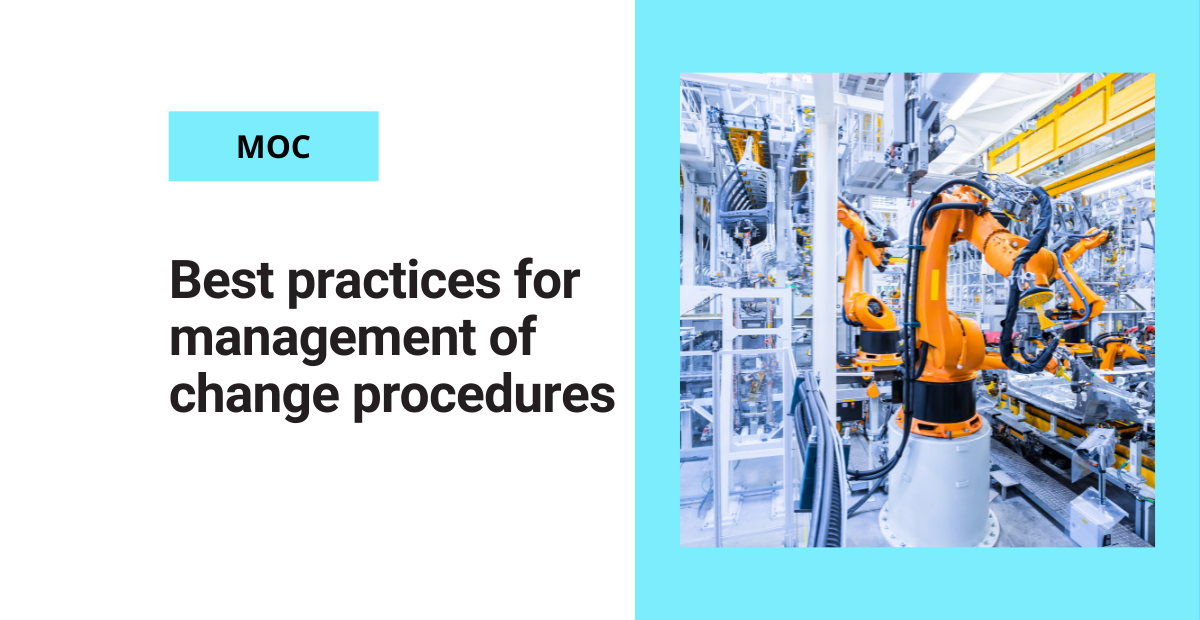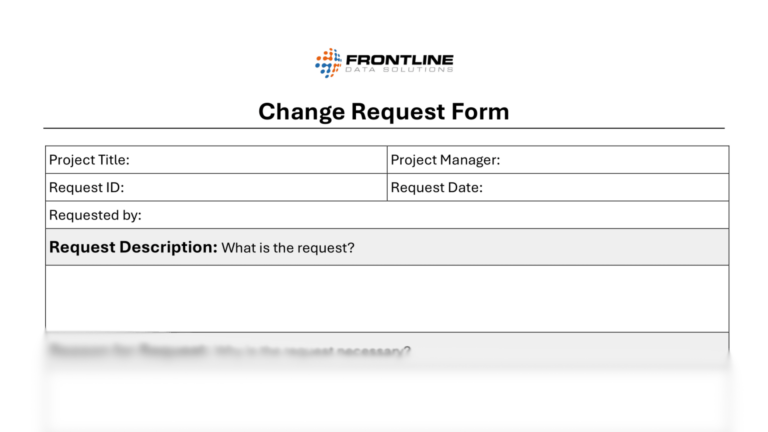The process safety management (PSM) standard requires employers to create and execute written management of change (MOC) procedures. MOC procedures help ensure that your workers understand, manage, and control the potential impacts of changes.
These changes include company changes related to processing chemicals, equipment, procedures, and facilities. You should perform a management of change procedure unless you’re replacing the machinery or chemical with the same machinery or chemical (replacement-in-kind).
Some organizational changes, such as mergers, acquisitions, reorganizations, workforce changes, or budget alternations, may affect PSM at the facility level and prompt a PSM MOC procedure. Examples include workforce changes such as increased or decreased workers, employee experience levels, or reliance on contractors that directly impact processes, procedures, and policy changes.
The MOC structure should include the use of a developed, written, and documented MOC review form. It should address the following before any change occurs:
1. The technical basis for the change
2. The impact of the change upon safety, health, and the environment
3. Changes required to any procedures
4. Time frame of the change
5. Authorization requirements for the change
Use appropriate analytical techniques, including qualitative hazard evaluation methods, to review the potential safety, health, and environmental impacts of a change.
Free form!
This template provides an outline that you can use to gather employee change requests.
When is a management of change MOC procedure necessary?
The PSM standard’s Management of Change (MOC) process helps control company changes when the outcome could affect applicable processes. For example, a company must implement a MOC procedure if it changes anything related to process chemicals, technology, equipment, procedures, or facilities.
In this way, the MOC procedure ensures that potential changes are properly managed and controlled so operations remain safe for both workers and the surrounding community. Moreover, employers must conduct a MOC review whenever changes directly affect process chemicals, technology, equipment, procedures, or facilities that are not a replacement-in-kind.
For instance, if staffing levels drop in a specific production area, workers may no longer be able to follow existing operating procedures with fewer people available to complete the required tasks. Therefore, the company must carry out a MOC procedure to manage the staffing change. In addition, it must revise the operating procedure to reflect the reduced workforce level so that operations remain safe under both normal production and emergency conditions.
Budget modifications can have a related effect. For example, a significant decrease in a maintenance department’s budget may require an employer to modify its procedures for how often inspections and preventative maintenance occur on machinery. Less maintenance crew means fewer inspections.
Since this change requires machine procedures to be modified, a MOC procedure must be established and implemented to ensure the ongoing integrity of machinery to ensure the equipment is still receiving its manufacturer’s recommendations of inspections and maintenance requirements.
MOC items to consider for management of change procedures
You may need to include additional items in your MOC procedures. Depending on the potential change, the items listed below should be considered:
- The description and purpose of the change
- The technical reasoning for the change
- Safety, health, and environmental considerations
- Documentation of changes for operating procedures
- Preventative maintenance procedures
- Inspections and tests
- Pipe and instrument diagrams
- Electrical diagrams
- Training
- Pre-startup inspection
- The estimated duration of a temporary change
- An updated emergency contingency plan
- Approvals and authorization of management
Start by developing a list of areas, departments, and activities to which the MOC system applies. Include specific examples of changes and replacements-in-kind for each category as well. This minimizes the possibility of someone bypassing your MOC procedures.
A designated approved person should authorize each management of change procedure. Sometimes, the MOC reviewers satisfy the MOC approver function; sometimes, the approver is independent of the MOC reviewers.

Frontline MOC product webinar on-demand
In this webinar, we cover the uses and benefits of our management of change software, Frontline MOC.
Management of change procedures best practices
Updated or modified processes create new hazards. Therefore, employees need health and safety training on the new operating procedures or potential hazards anytime a new MOC takes place.
In addition, all employees, including maintenance and contractor employees, need to fully understand the safety and health hazards and the controls of the chemicals and processes they operate.
In addition, you should update the ‘worst-case scenarios’ when there is a process change to indicate the impact on nearby facilities and communities. The worst-case scenario assessment assumes that all current and backup safety systems have failed.
You must consider and plan for all potential scenarios, even unrealistic ones. Sites must prepare, plan, and train employees for any potential situation that could affect workers and the community.
Even temporary changes can cause accidents. Temporary changes can still cause tragic situations, so you should still use an MOC for short-term changes. These MOCs should include the approximate duration of the changes because sometimes, these changes become permanent.
Also, management of change procedures ensure that machinery and processes return to their original design or condition after the temporary change.
Completing a final review
Finally, the you should document and review changes to ensure the integration of EHS considerations into your site’s SOPs.
When the impact of the change is minor and the potential issues are fully understood, a checklist may be sufficient to understand the possible effects of the changes. For more major or significant changes, a hazard evaluation policy or procedure should be developed and implemented.
Everyone from engineers to operators should consult in the development of new procedures for a process change. Operators that work on the equipment daily understand the health and safety hazards involved in the process the most. They are the best to help identify possible problems and effective controls.
The process change, emergency procedures, and EHS information need to be documented and stored in a location that is known and accessible to all employees involved.





